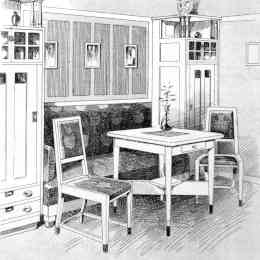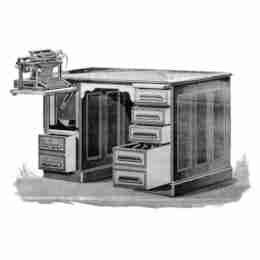The Decline of Art Nouveau
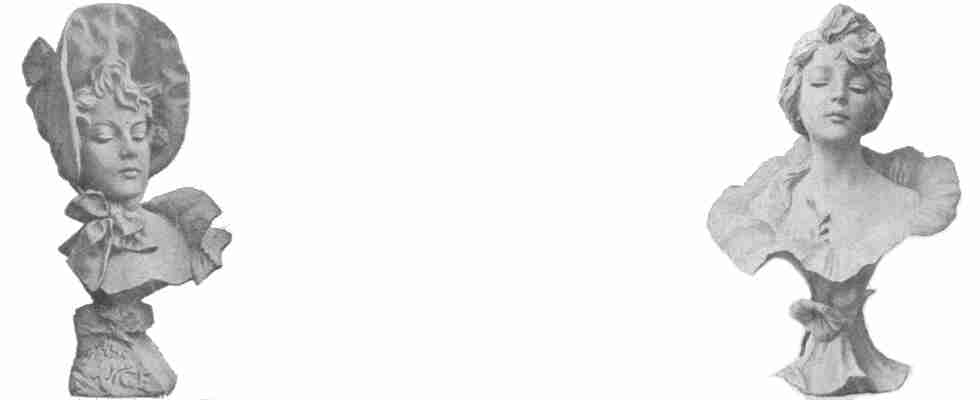
Introduction
As far as one is able to judge, it seems almost necessary to make a record of what is called L'Art Nouveau before it disappears as a living style. The French name rather than the English is chosen to denominate this work because what new fashions have been introduced into this country in recent years are, for all practical purposes, indistinguishable as far as their style is concerned from the arts-and-crafts kind of work which preceded. New forms have, of course, been introduced, but not sufficiently different to their predecessors to justify one in supposing that they belong to anything but the movement already in existence.
It is due, probably, to the steady, perhaps rather slow, English taste that modern work in this country has never gone to extremes, except in rare cases, and consequently we have no reaction to face. In, France the case is different. The modern style was received there with such acclamation that its artists were tempted to think that they might abandon altogether every tradition. Emile Gatlé and Majorelle Brothers, the one in pottery and glass and the others in furniture, went as far as their imagination would carry them—that was a good distance—in their new style of work. They flouted their predecessors and boasted that they had returned to primitive sources of inspiration and were entirely free from what they pleased to call the taint of tradition.
The pottery was more successful than the furniture. This may have been because the classical pottery by which I mean such work as that produced by Sévres, when not decorated with purely pictorial ornament, was treated with little scraps of scroll work and coquillage taken straight from the furniture of the period, a style of ornament which, though suitable enough in its way, is not so effective on pottery and china as in its proper place.
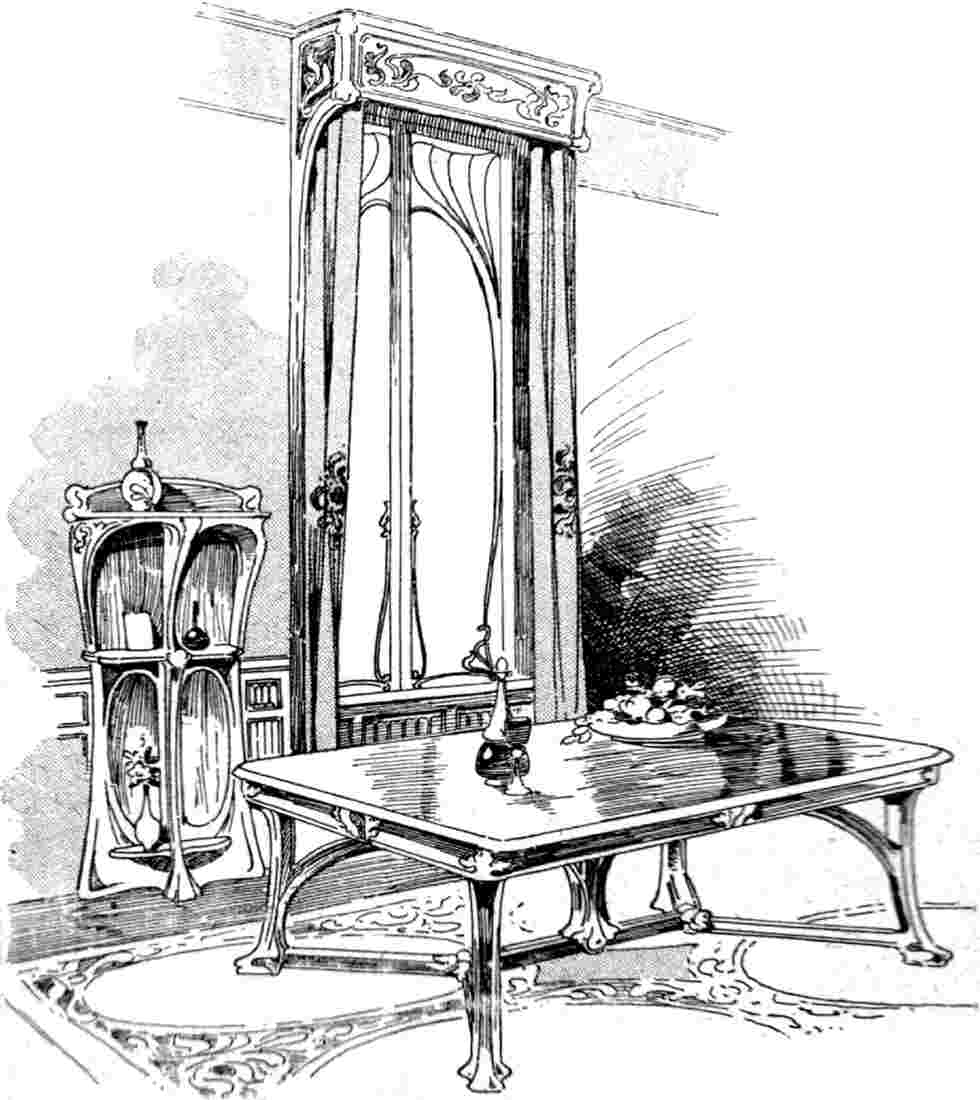
Art Nouveau Furniture
The fictile arts lend themselves much more readily to the rather dreamy and incoherent style of design affected by the new school, and accordingly Gallé achieved a success which we may believe will be lasting. With the furniture the case varies. A conventionalised treat¬ ment of natural forms is desirable, but branches and trees copied in chair and table legs, and flowers and leaves embodied in beautiful inlay, are not, properly speaking, applied arts, and although at the beginning of the movement there was a great craze for this work it soon began to wane, and from all accounts of the French cabinetmakers—and it is on the commercial side that we get the true test of the popularity of the work—it seems that the vogue is now almost entirely over, at least, in France. It is the interest which naturally surrounds anything we are about to lose that makes it appear probable that sketches of some of the prominent pieces of the new art work, supplementary to a large number published in this magazine during the summerof 1900 and the beginning of 1901, may be of interest.
In image 1 we get a fair resumé of what good features the style shows. Beyond the fact that the table has legs and a top it resembles practically a table in no other style. The small cabinet, too, is quite novel in outline, and the decoration of both, suggesting actual growing wood, is extremely novel and not particularly unpleasing. One of the features of this new style, on the technical side, is the great judgment shown by the workers in the selection and introduction of new woods. Coloured veneers are also employed with a surprisingly fresh, if not always particularly pleasant, effect. Whether this inlaid work will stand the test of time as regards its colour seems to be a moot point. The technique is perfect, but the beautiful flowers in some of the woods seem incapable of possessing the power of endurance.

The feeling in which the chair, cabinet, and settee in image 2 are conceived is novel, and the upholstering of the chair is quite in keeping with the style.
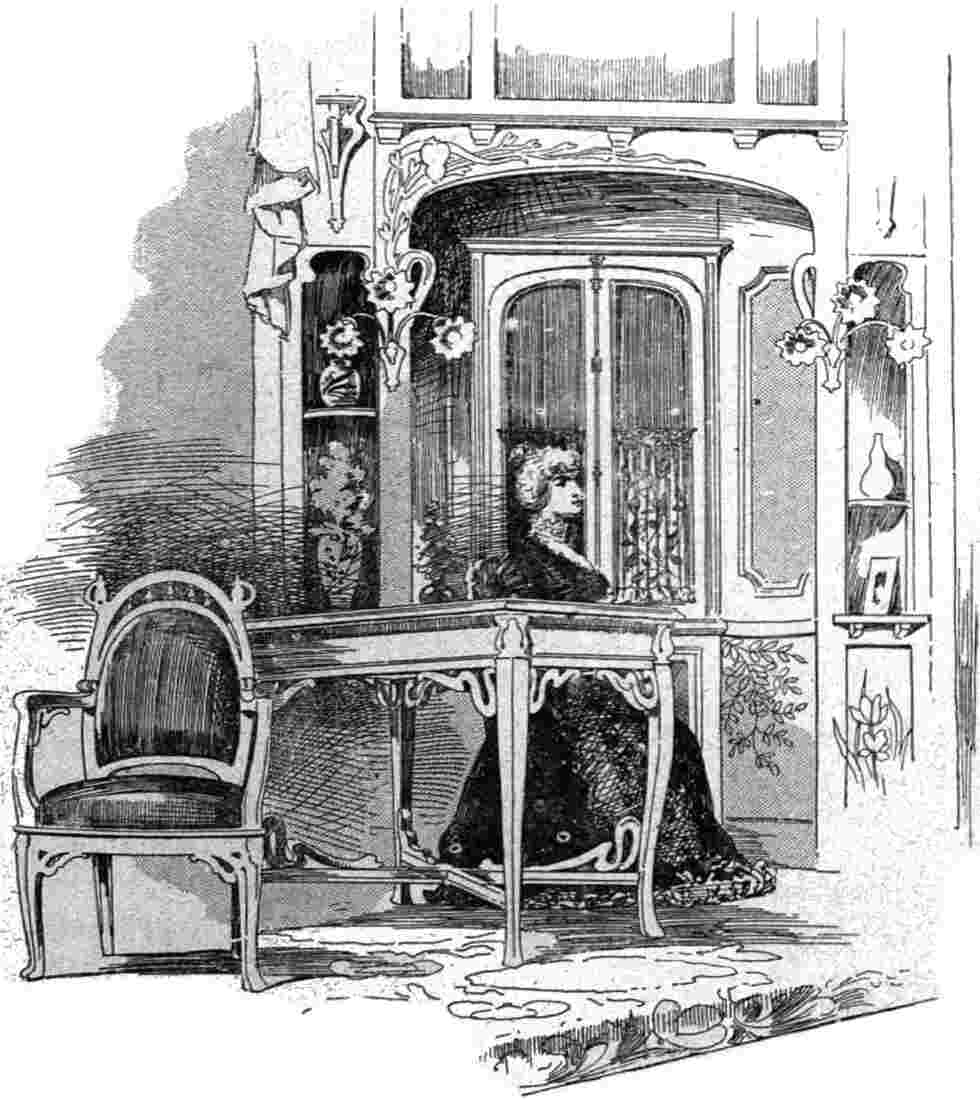
Some works are not so pleasing, such as image 3, and the chair particularly shows that the designers have not hesitated to draw upon the really ugly, rather than approach any existing pattern.
Conclusion
Furniture designers seem have run out of fresh ideas for Art Nouveau furniture. Is this the decline of the popular French furniture style. Here at The House, we look ahead at the upcoming furniture trends. We will devote our future studies at modern Austrian and German products. Modern furniture trends are coming in from Continental furniture designers. Furniture fashion continue to evolve. Our November edition will investigate modern style that avoid all embellishments. New work is dainty in form and direct in its function. Modern furniture has sharp lines and a focus on materials.



